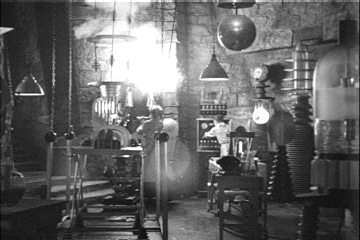Copyright © Cay S. Horstmann 2011 
This work is licensed under a Creative Commons Attribution-Noncommercial-Share Alike 3.0 United
States License.
Copyright © Cay S. Horstmann 2011 
This work is licensed under a Creative Commons Attribution-Noncommercial-Share Alike 3.0 United
States License.
class"3.14"("expressionterm ::= factor * term
term ::= factor
term ::= factor * term ::= factor * factor * term ::= factor * factor * factor

(1) (1, 24, 4) ()
list ::= "(" contents ")"
contents ::= contents ::= number contents ::= number "," contents
(1, 24, )list ::= "(" contents ")"
list ::= "(" ")"
contents ::= number contents ::= number "," contents
contents yields n
numbers separated by n - 1 commasA | B(A)* or {A}(A)+(A)? or [A]list = "(" ( number ( "," number )* )? ")"
~|rep(...)opt(...)class SimpleLanguageParser extends JavaTokenParsers {
def expr: Parser[Any] = term ~ opt(("+" | "-") ~ expr)
def term: Parser[Any] = factor ~ opt(("*" | "/" ) ~ term)
def factor: Parser[Any] = wholeNumber | "(" ~ expr ~ ")"
}
Parser[Any] with something more useful
lateropt(P) returns Option: Some of the
result of P, or Nonerep(P) returns List of the results of
PP ~ Q returns instance of class ~ (similar to a
pair)val parser = new SimpleLanguageParser val result = parser.parse(parser.expr, "3 - 4 * 5")
sets result to
((3~None)~Some((-~((4~Some((*~(5~None))))~None))))
(x~None) to x,
Some(y) to y, and ~ to spaces:
(3 (- (4 (* 5))))

ubmit lab work to Sakai.
package parsing3
import scala.util.parsing.combinator._
class SimpleLanguageParser extends JavaTokenParsers {
def expr: Parser[Any] = term ~ opt(("+" | "-") ~ expr)
def term: Parser[Any] = factor ~ opt(("*" | "/" ) ~ term)
def factor: Parser[Any] = wholeNumber | "(" ~ expr ~ ")"
}
object Main {
def main(args: Array[String]) = {
val parser = new SimpleLanguageParser
val result = parser.parse(parser.expr, "3 - 4 * 5")
println(result)
}
}
factor rule recurses back to the expr rule.
Give an example input to the parser that demonstrates this feature. What is
your input? What is the output?SimpleLanguageParser (and
not to Main):
def eval(x : Any) : Int = x match {
case a ~ Some("+" ~ b) => eval(a) + eval(b)
case a ~ Some("-" ~ b) => eval(a) - eval(b)
case a ~ Some("*" ~ b) => eval(a) * eval(b)
case a ~ Some("/" ~ b) => eval(a) / eval(b)
case a ~ None => eval(a)
case a : String => Integer.parseInt(a)
case "(" ~ a ~ ")" => eval(a)
}
In your main program, print the value computed by
parser.eval(result.get). What output do you get when the
parser input is 3 - 4 * 5? 3 * 4 - 5?
eval function do? val x = 3 + 4 * y
In BNF, this would be
valdef ::= "val" identifier "=" expr
Add a valdef type to the combinator parser that represents
such a definition. (To see how to parse an identifier, go to the scaladoc
of JavaTokenParsers and then click on the source link on the
top of the file.)
What is the type that you added?
val x = 3 + 4? Hint: Remember
to call
parser.parse(parser.valdef, "val x = 3 + 4")
val x = 3 + 4 * y? (Hint: Look
closely at the output. Where is the y? Why?)